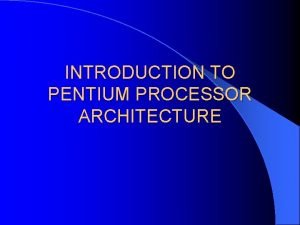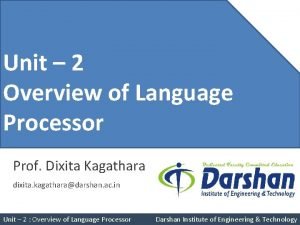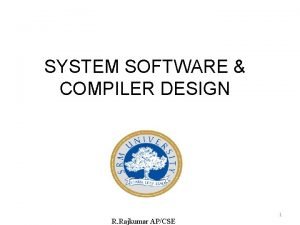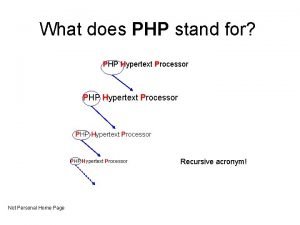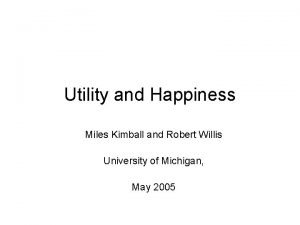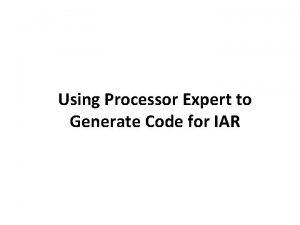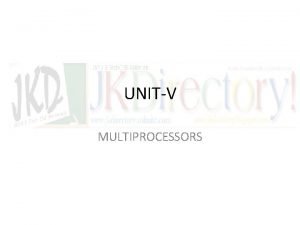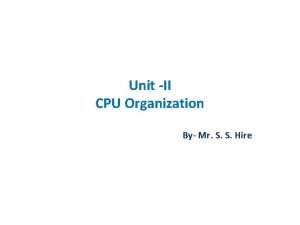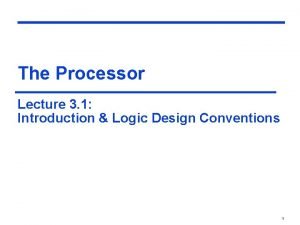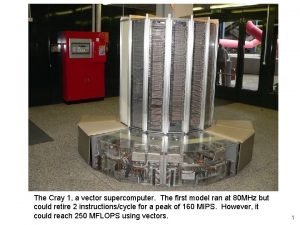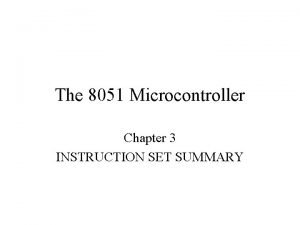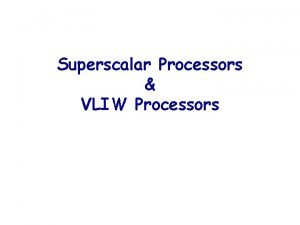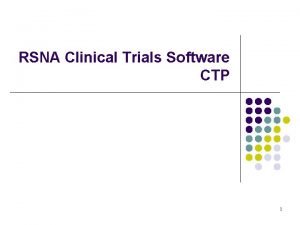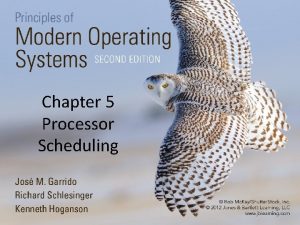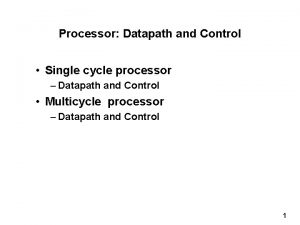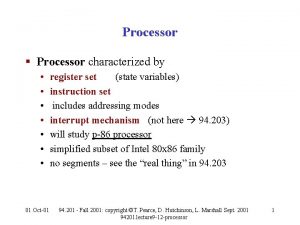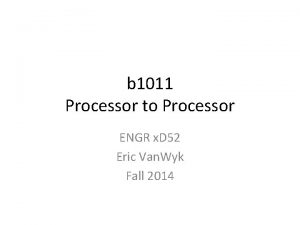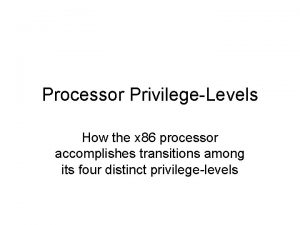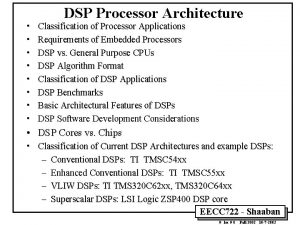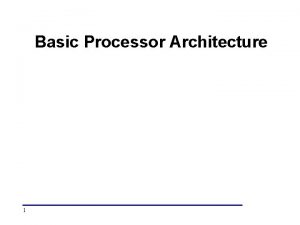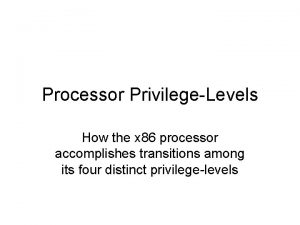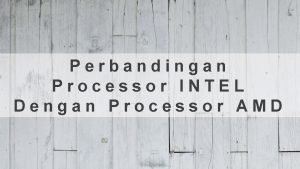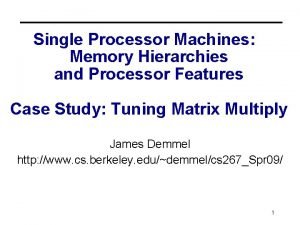1 1 Introduction to Language Processor A language

















- Slides: 17

1. 1 Introduction to Language Processor • A language processor is a software which bridges a specification and execution gap. • Language processing activities arise due to: – The difference between software designer’s idea related to behavior of software and the manner in which these ideas are implemented. 1

Introduction to Language Processor • The designer expresses the ideas in terms related to the application domain. • To implement these ideas in terms related to execution domain. • The difference between the two domain termed as semantic gap. Semantic Gap Application Domain Execution Domain 2

Introduction to Language Processor • The semantic gap has many difficulties, some of the important ones being large development time and efforts, and poor quality of software. • These issues are tackled through the use of programming language (PL). • Software implementation using PL introduces a new domain as PL domain. 3

Introduction to Language Processor • Now the semantic gap is bridged by the software engineering steps. • The first step bridges gap between application domain and PL domain known as specification gap. • While the second step bridges the gap between PL domain and execution domain as execution gap. Specification Gap Application Domain Execution Gap PL Domain Execution Domain 4

Introduction to Language Processor • The specification gap is bridge by the software development team. • While the execution gap is bridged by the designer of the programming language processor. Like compiler or interpreter. • PL domain reduces the difficulties of semantic gap mentioned earlier. • The language processor also provides a diagnostics capability which detects and indicates errors in its input. This helps in improving the quality of the software. 5

Introduction to Language Processor • Language processor is a software which bridges a specification or execution gap. • We use term language processing to describe the activity performed by a language processor. • We refer to the program form input to a language processor as source program and its output as the target program. • The language in which these programs are written are called source language and target language. 6

Introduction to Language Processor • A range of LP is defined to meet practical requirements. 1. A language translator bridges an execution gap to the machine language like assembler and compiler. 2. A detranslator bridges the same as the language translator, but in the reverse manner. 3. A preprocessor is a language processor which bridges an execution gap but not translator. 4. A language migrator bridges specification gap between two PLs. 7

MCQ • The designer expresses the ideas in terms related to the _____ of the software. A. Application Domain B. Execution Domain C. PL Domain D. Program Generator Domain 8

MCQ • The designer expresses the ideas in terms related to the _____ of the software. A. Application Domain B. Execution Domain C. PL Domain D. Program Generator Domain 9

MCQ • The gap between Application domain and PL domain is called_____. A. Execution Gap B. Specification Gap C. Application Gap D. Semantic Gap 10

MCQ • The gap between Application domain and PL domain is called_____. A. Execution Gap B. Specification Gap C. Application Gap D. Semantic Gap 11

MCQ • A _____ is software which bridges a specification or execution gap. A. Language Processor B. Editor C. Application D. None 12

MCQ • A _____ is software which bridges a specification or execution gap. A. Language Processor B. Editor C. Application D. None 13

MCQ • The gap between PL domain and Execution domain is called_____. A. Semantic Gap B. Specification Gap C. Application Gap D. Execution Gap 14

MCQ • The gap between PL domain and Execution domain is called_____. A. Semantic Gap B. Specification Gap C. Application Gap D. Execution Gap 15

Short Questions • • Draw a diagram of a language processing system. What is meaning of Language Processing? Define : Application Domain & Execution Domain Define: Specification Gap & Execution Gap 16

Long Questions • What is Language Processing? Explain Application, PL & Execution domain. • What is Language Processing? Explain spectrum of language processor. • Explain Language Processing Activity in detail. 17
 Intel pentium processor architecture
Intel pentium processor architecture Semantic gap in system programming
Semantic gap in system programming Language processing system in compiler design
Language processing system in compiler design Imperative statement in assembly language
Imperative statement in assembly language Fregnote
Fregnote Language processor mcq
Language processor mcq What php stands for?
What php stands for? Miles kimball food processor
Miles kimball food processor Processor expert
Processor expert Form processor in windchill
Form processor in windchill Multiprocessor and its characteristics
Multiprocessor and its characteristics Processor organization
Processor organization Minima processor
Minima processor Processor logic design
Processor logic design Cray 1/2
Cray 1/2 Boolean processor of 8051
Boolean processor of 8051 Vliw processors rely on
Vliw processors rely on Ctp dicom
Ctp dicom
